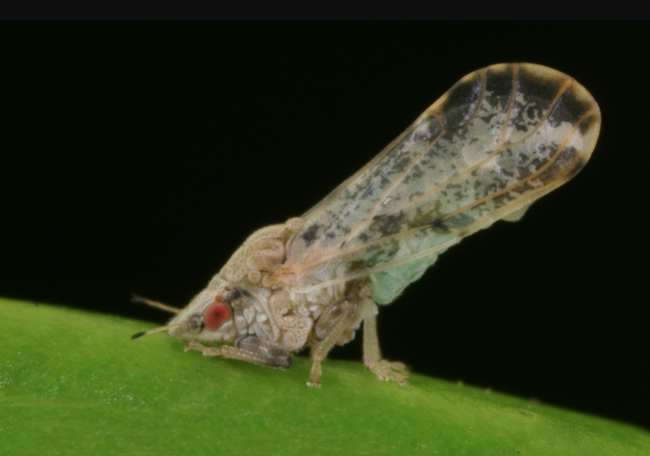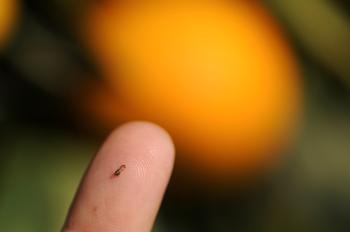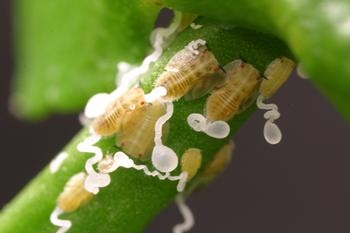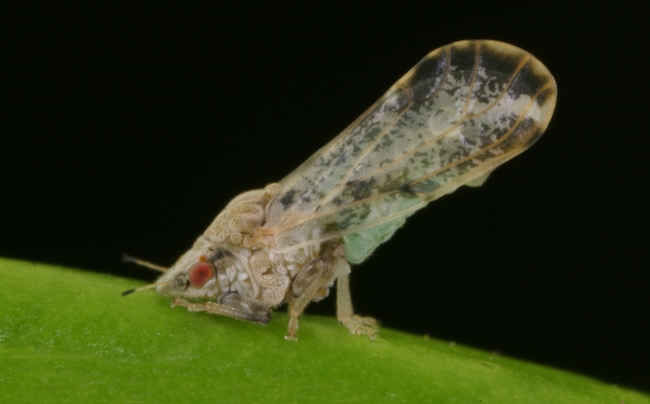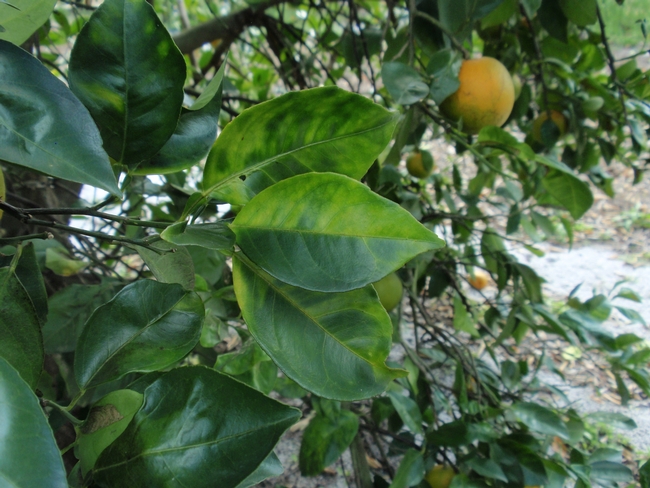
Posts Tagged: Asian
Infected citrus pest that spreads disease found in Ventura County
Residents urged to check their citrus trees for Asian citrus psyllid
An insect carrying the huanglongbing bacteria, a pathogen that kills citrus trees, has been found on a residential citrus tree in Ventura County, according to the California Citrus Pest & Disease Prevention Program.
“This really is a devastating find,” said Ben Faber, UC Cooperative Extension subtropical crops advisor for Ventura and Santa Barbara counties. “It means that Asian citrus psyllid that is infected with the HLB bacteria is present in the middle of a citrus-growing area that is currently and historically important for lemon production.”
This is the first confirmed case in Ventura County of Asian citrus psyllid testing positive for the bacterium Candidatus Liberibacter asiaticus. The bacterium is associated with huanglongbing, or HLB, also called citrus greening disease. HLB can kill a citrus tree in as few as five years, and there is no known cure or remedy. All commonly grown citrus varieties are susceptible to the pathogen, which means commercial citrus growers should monitor and treat to manage its vector to protect their groves. The additional expenses come at a bad time.
“The disease is a tree killer and it's happening to growers who are already having difficult times with low lemon prices making it difficult for them to stay and continue farming,” Faber said.
The infected Asian citrus psyllid was found in the Santa Paula area, but the UCCE farm advisor asks all Ventura County citrus tree owners to be on the lookout for the tiny, mottled brown insect about the size of an aphid.
“It takes a whole community to address the disease in order to protect all the trees,” Faber said. “If one tree remains, it potentially can infect all the surrounding citrus trees.”
The psyllid takes the bacteria into its body when it feeds on bacteria-infected plants. When a bacteria-carrying psyllid flies to a healthy plant and injects the bacteria into the plant as it feeds, it can spread the disease.
Hamutahl Cohen, UCCE entomology advisor for Ventura County, saw the devastation of HLB on citrus in Florida, where she worked before moving to California.
“After 2005, we saw that HLB spread rapidly across Florida, resulting in tree mortality and increased costs of production,” she said. “Due to HLB, orange yield in Florida decreased about 40%. In California, growers will benefit if the public helps them by monitoring their backyard citrus trees."
As of Sept. 20, HLB had not been detected in any Ventura County citrus trees.
Neil McRoberts, UC Davis professor of plant pathology, urged vigilance, but not panic. “We have long suspected that ACP infected with the pathogen are present in Ventura, the results simply confirm that suspicion.”
The only way to protect citrus trees from the lethal disease is to prevent the spread of the HLB pathogen by controlling psyllid populations and destroying infected trees.
“Not all ACP carry the bacteria, but if one is found, it means either that an infected insect has flown or hitchhiked in,” Faber said. The psyllids can fly pretty far by themselves, but they can move great distances when people move them.
To identify Asian citrus psyllid, see pictures of the psyllid and its life stages on the UC Agriculture and Natural Resources website at http://ucanr.edu/acp and the UC Integrated Pest Management Pest Note at https://ipm.ucanr.edu/PMG/PESTNOTES/pn74155.html. More information is also available at https://californiacitrusthreat.org , a website maintained by the Citrus Pest & Disease Prevention Program, an initiative funded by California citrus growers and administered by the California Department of Food and Agriculture.
Beth Grafton-Cardwell, UC Cooperative Extension citrus entomology specialist emeritus, and Mark Hoddle, UCCE entomology specialist based at UC Riverside, demonstrate how to look for the various stages of the psyllid in the video “Check your citrus trees for Asian citrus psyllid” on YouTube https://www.youtube.com/watch?v=UhqwUQm0zpk.
Report suspected cases of the psyllid or disease to your county agricultural commissioner's office or call the CDFA hotline at 1-800-491-1899.
Commercial growers can get the latest news about ACP at the Citrus Pest & Disease Prevention Program website https://citrusinsider.org.
More information about Asian citrus psyllid can be found in ANR publication 8205 https://escholarship.org/uc/item/8vr1376d, ANR publication 8218 https://escholarship.org/uc/item/48v1v164 and on the U.S. Department of Agriculture website https://www.aphis.usda.gov/aphis/resources/pests-diseases/hungry-pests/the-threat/asian-citrus-psyllid/asian-citrus-psyllid.
Invasive Spotlight: Asian Citrus Psyllid and Huanglongbing Disease
The Asian Citrus Psyllid (ACP) is a small, aphid-sized insect that poses a serious threat to...
Asian citrus psyllid study: Vigilance urged but ‘no cause for panic’
Preliminary results indicate 3.5% of ACP collected showed signs of bacterium that can cause huanglongbing
An ongoing study in the commercial citrus groves of coastal Southern California is looking at whether Asian citrus psyllids – the insect vector of huanglongbing “citrus greening” disease – are carrying the bacterium that can cause HLB.
Thus far, the project has tested more than 3,000 adult ACP collected from 15 commercial citrus sites across the region, of which 138 – just over 3.5% – had some level of the bacterium present, according to researchers from UC Agriculture and Natural Resources, UC Davis, UC Riverside and the University of Arizona, Tucson.
“While the results are a cause for concern, the situation in California is much better than in Florida and Texas, where ACP carrying the bacterium make up the majority of the population and HLB is widespread in commercial citrus,” said Neil McRoberts, a UC Davis plant pathologist and UC Integrated Pest Management program affiliate advisor. “The results indicate that there is no room for complacency, but also no cause for panic.”
Since the first HLB-infected tree in California was found in 2012, nearly 4,000 infected trees have been detected and removed from residential properties in Southern California, mainly in Orange and Los Angeles counties. According to McRoberts, “to date, no HLB has been found in commercial citrus” in California.
He stressed, however, that the aforementioned ACP study – funded by the HLB Multi Agency Coordination Group and managed by USDA-APHIS – does not involve any testing of trees for HLB and focuses only on looking at the insect which spreads the bacterium.
McRoberts also emphasized that the project's detections of the bacterium cannot be considered “official” because the researchers' lab procedures differ from the official testing protocols of the California Department of Food and Agriculture.
“Follow-up sampling by CDFA staff would allow official samples to be collected for further investigation, but is entirely voluntary for the growers involved,” he said, adding that his research team is currently wrapping up the sampling phase of the project, with data analysis continuing into 2023.
While commending the “huge coordinated effort” by the California citrus industry, California Department of Food and Agriculture, UC ANR and other partners to suppress the ACP vector and slow the spread of HLB, McRoberts also urged continued vigilance.
“Our study results indicate that it is not time to declare the emergency status for ACP/HLB in California over – the situation is still evolving,” he said.
For further information about the research, contact Neil McRoberts at nmcroberts@ucdavis.edu or (530) 752-3248.
Wasps, Wasps, Wasps: Weird and Wonderful Wasps
Do you have a question about wasps or want to learn more about them? Be sure to attend the free...
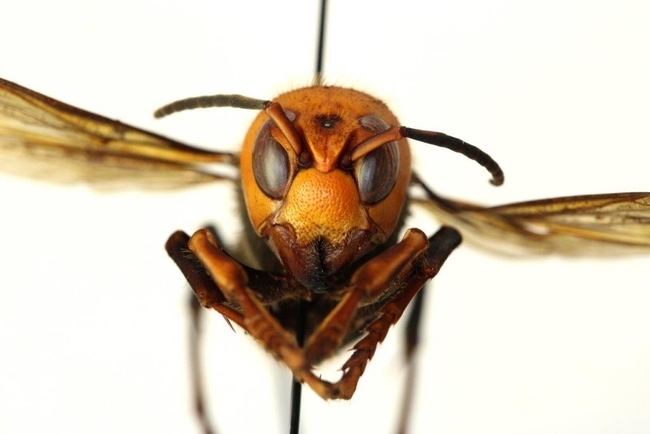
This is the Asian giant hornet, Vespa mandarinia, dubbed by the news media as “the murder hornet." The Entomological Society of America recently established as its official common name, “northern giant hornet.” (Photo courtesy of the Washington State Department of Agriculture)
Spring Is Bustin' Out All Over
June is bustin' out all overAll over the meadow and the hillBuds 're bustin' outa bushesAnd the...
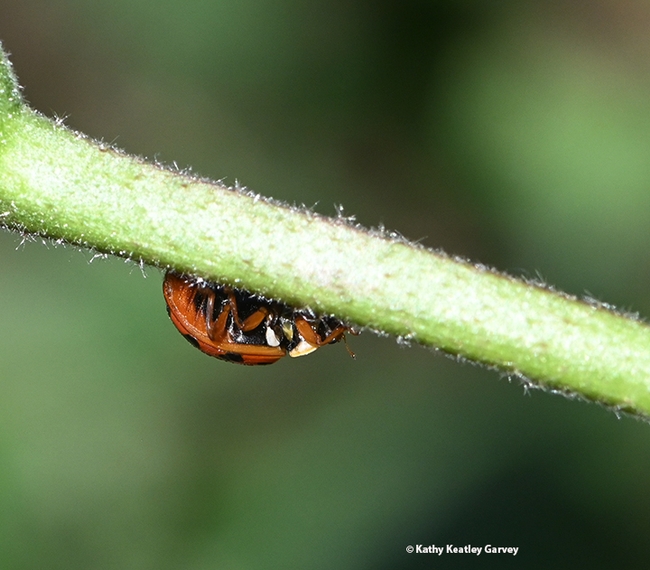
A multicolored Asian lady beetle looking for love--or prey--on a mallow on the first day of spring. (Photo by Kathy Keatley Garvey)
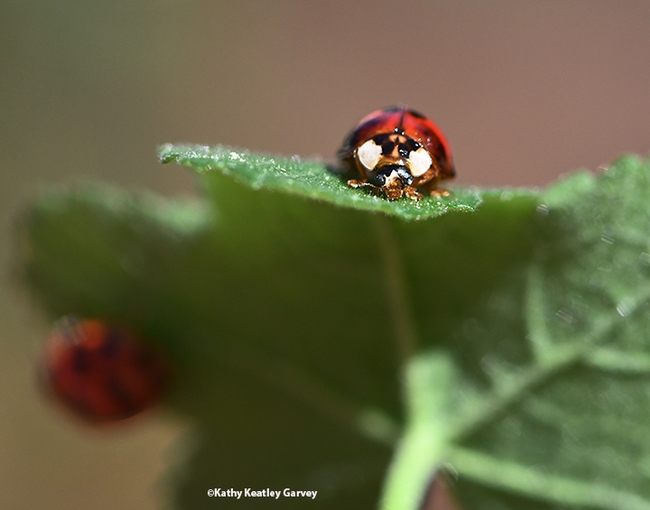
Lady beetle, you are not alone. (Photo by Kathy Keatley Garvey)
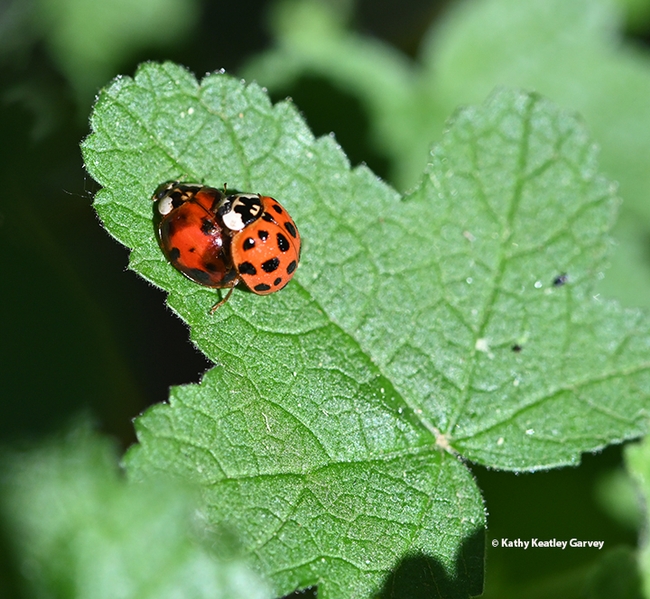
Two multicolored Asian lady beetles who found one another. Well, call that a lady beetle and a gentleman beetle. (Photo by Kathy Keatley Garvey)
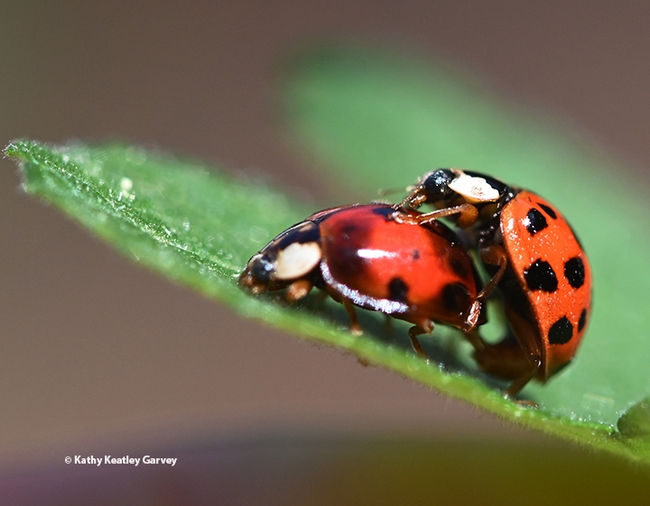
It's spring! (Photo by Kathy Keatley Garvey)

